Results 8,111 to 8,120 of 12094
Thread: Anandtech News
-
05-09-18, 03:40 PM #8111
Anandtech: HP Unveils EliteBook 700 G5, ProBook 645 G4 Laptops with Ryzen PRO & Thund
HP this week announced its first notebooks based on AMD’s Ryzen PRO mobile processors. The new EliteBook 700-series and ProBook 700-series systems are designed for business as well as enterprise customers and support appropriate functionality, such as advanced security, remote management, optional smart card readers, and so on. One of the unique features of the systems is their compatibility with HP’s upcoming Thunderbolt Dock G2 over a Thunderbolt 3 or a USB interface. Meanwhile for AMD this marks a significant development, as these are some of the highest-end (and highest quality) laptops their Ryzen APU has made it into to date.
HP EliteBook 700-Series G5: The First High-End Ryzen PRO-Powered Laptop
HP’s EliteBooks are the company’s high-end PCs for business and enterprise users looking for performance and premium features, but not necessarily demanding things required by the government agencies (e.g., smart card readers) or various road warriors and field workers (e.g., smart card readers, NFC, etc.). With AMD’s Ryzen PRO Mobile platform, the fifth-generation EliteBook 700-series PCs get AMD’s silicon level security technologies, such as the Transparent Secure Memory Encryption (TSME) feature that protects data in DRAM using a dedicated AES-128 engine, secure boot, TPM 2.0, remote management and other capabilities. HP traditionally outfits its EliteBook systems with various proprietary security features that enable self-healing, manageability, encryption and so on. As for performance, all AMD’s Ryzen PRO Mobile processors feature four cores with or without SMT clocked at 2 – 2.2 GHz default frequency (3.4 – 3.8 GHz max boost clocks) and are outfitted with the Radeon Vega 6, 7 or 8 iGPUs.
The EliteBook 700 G5 systems come in machined-aluminum chassis and are equipped with 13.3-inch, 14-inch or 15.6-inch LCDs with narrow bezels. The displays may be optionally equipped with touch, HP’s Sure View privacy screen as well as HP’s privacy camera (a webcam with a shutter). HP does not disclose screen resolutions it plans to offer with the new notebooks, but based on what HP offers with the EliteBook 700 G4 machines, we may expect the new systems to be equipped with displays featuring a 1366×768, 1920×1080 or even 2560×1440 resolution.
Depending on the model, the EliteBook 700 G5 laptops are 17.7 – 18.25 mm thick (0.7 – 0.72 inches) and weigh between 1.33 and 1.86 kilograms (2.94 – 4.09 pounds). HP’s EliteBooks are not exactly ruggedized, but they are designed to pass MIL-STD 810G testing for exposure to high and low temperatures, drops, humidity, and other environmental conditions. This does not mean that the fifth-gen EliteBook 700-series laptops can pass all of these tests, but they can handle the bumps of life on the go.
Moving on to other features of the HP EliteBook 700 G5 notebooks. The PCs will come with various memory and storage options (expect encrypted and un-encrypted HDDs and SSDs to be offered), a 802.11ac + Bluetooth wireless module, as well as an optional 4G/LTE modem. As for wired I/O, the new computer will be outfitted with a GbE, USB Type-A ports, an HDMI output, a Thunderbolt 3 (USB Type-C) header, a microSD card reader, a TRRS connector, HP’s proprietary dock port (for those who need an inexpensive D-Sub connectivity), and a smart card reader (only on select SKUs).
It is noteworthy that HP’s fifth-generation EliteBook 700 laptops are the first AMD-based mobile computers to feature Thunderbolt 3 interface (hopefully, other PC makers will follow the suite and Ryzen-based notebooks will get a very fast external interface). The TB3 port will be compatible with HP’s recently introduced Thunderbolt 3 Gen 2 dock that has various expansion ports (two DisplayPorts, one D-Sub, two USB 3.0, an additional GbE, a TB3 header, etc.) and an optional audio module, but without an integrated GPU for those who want to play games. The good news is that the EliteBook 700 G5 comes with Microsoft’s Windows 10 Pro, so it is compatible with third-party eGFX solutions powered by both AMD Radeon as well as NVIDIA GeForce GPUs.
Just like other modern business laptops from HP, the EliteBook 700 G5 systems will come with integrated microphone array and Bang & Olufsen-branded speakers with the HP Noise Cancellation capability to improve quality of conference calls. Most SKUs will also feature webcams with IR sensors to support Windows Hello as well as fingerprint readers to enhance biometric authentication options. It is also noteworthy that while only the 15.6-inch EliteBook 755 G5 will feature an extended keyboard, the smaller 14-inch EliteBook 745 G5 PC will still have Delete (this one is also present on the 13.3-inch EliteBook 735 G5 model), Home, Page Up, and Page Down keys. In addition, there are special buttons to answer or deny Skype calls.
HP plans to start sales of the fifth-generation EliteBook 700-series notebooks later this month. Pricing of entry-level machines will start at $999, more advanced SKUs will carry considerably higher price tags.
HP ProBook 645 G4: AMD Ryzen PRO-Based Working Horse
HP’s ProBook series is aimed at enterprises, government agencies, and road warriors that require maximum levels of security along with various special-purpose hardware, but may not need premium features. With its fourth-generation ProBook 600-series laptops, HP offers a number of relatively exotic devices, including NXP’s NFC controller NPC300 I2C NCI, a smart card reader, a DVD burner (on 15.6-inch models only), and various 4G/LTE modems.
HP’s fourth-generation ProBook 600 family currently includes three base models: the HP ProBook 640 G4 and the HP ProBook 650 G4 powered by Intel’s 7th or 8th Generation Core processors outfitted with AMD’s Radeon RX 540 dGPUs (select SKUs only) as well as the HP ProBook 645 G4 based on AMD’s Ryzen PRO CPUs with Radeon Vega iGPUs.
The ProBook 645 G4 laptop comes in the same aluminum chassis as the ProBook 640 G4, it is outfitted with a 14-inch display (exact characteristics are unknown, but expect various models to feature HD or FHD resolution as well as various brightness levels), it is 20.99 mm (0.83 inches) thick and it weighs 1.73 kilograms (3.8 pounds). The chassis reportedly endures HP’s internal tests for reliability and was designed to pass MIL-STD 810G testing.
From performance and security capabilities points of view, the ProBook 645 G4-series laptops will likely offer similar features as the aforementioned EliteBook 700 G5 machines (HP’s hardware-enforced self-healing capability, manageability, TPM 2.0, and so on), but there will be some differences. The notebooks will be optionally outfitted with HP’s Sure View privacy screens and HP’s Privacy Camera shutters. Meanwhile, they will not support IR cameras for Windows Hello with facial recognition and will only come with optional fingerprint readers.
Intel-based HP ProBook 640 G4 systems are offered with up to 32 GB of DDR4 memory and various storage options, including 500 GB HDDs (un-encrypted or FIPS-encrypted) or 128 GB – 1 TB SSDs with a SATA or PCIe/NVMe interfaces (un-encrypted, FIPS-encrypted, TCG OPAL 2-encrypted). It remains to be seen what exactly HP will offer with AMD-based ProBook 645 G4 machines, but given positioning of these systems, encrypted storage devices must be offered at least optionally. Keep in mind that since the ProBook 645 G4 is listed as “coming soon,” HP does not disclose all of its specifications just now, so we have to restrict ourselves to general specs only.
When it comes to connectivity, the new ProBook 645 G4 will feature 802.11ac Wi-Fi and Bluetooth, it is also highly likely that select SKUs will be outfitted with a 4G/LTE modem to address road warriors. As for wired I/O, the manufacturer advertises GbE, USB Type-A, USB Type-C, HDMI, microSD, and proprietary dock ports. The ProBook 645 G4 notebooks will be equipped with standard stereo speakers with no fancy Bang & Olufsen enhancements and a microphone array for proper audio conferencing.
HP’s ProBook 640 G4-series notebooks do not feature a Thunderbolt 3 port, but are still compatible with the company’s Thunderbolt Dock G2, albeit with obvious bandwidth limitations. In addition, the laptops are compatible with HP’s proprietary docks, so companies that invested in appropriate hardware can keep using it to connect to various projectors using a D-sub interface.
HP intends to start selling the ProBook G4 notebooks in May. Pricing of entry-level models are expected to start at $759, but once equipped with exotic components like NFC modules or smart card readers as well as loads of RAM and high-capacity SSDs, their pricing will rise well beyond $1000.
Related Reading:General Specifications of HP's Laptops Based on AMD's Ryzen PRO CPUs EliteBook 735 G5 EliteBook 745 G5 EliteBook 755 G5 ProBook 645 G4 Display Diagonal 13.3" 14" 15.6" Resolution 1366×768, 1920×1080, 2560×1440 Type IPS CPU AMD Ryzen 3 PRO 2200U: 4C/4T, 2 - 3.4 GHz, 2 MB L2 + 4 MB L3, 15 W
AMD Ryzen 5 PRO 2500U: 4C/8T, 2 - 3.6 GHz, 2 MB L2 + 4 MB L3, 15 W
AMD Ryzen 7 PRO 2700U: 4C/8T, 2 - 3.8 GHz, 2 MB L2 + 4 MB L3, 15 WGPU Ryzen 3 PRO 2200U: Radeon Vega 6, 384 stream processors at 1.1 GHz
Ryzen 5 PRO 2500U: Radeon Vega 8, 512 stream processors at 1.1 GHz
Ryzen 7 PRO 2700U: Radeon Vega 10, 640 stream processors at 1.3 GHzRAM Capacity ? Type DDR4 Storage SSD up to 1 TB PCIe/NVMe SSD (?) HDD up to 500 GB HDD (?) Hybrid ? Wi-Fi 802.11ac Wi-Fi module (unknown vendor) Bluetooth ? USB USB 3.0 Type-A
1 × USB 3.0 Type-C (power, data, DP 1.2)Thunderbolt 3 1 × USB Type-C with TB3 port Ethernet GbE Other I/O HDMI, 720p webcam (with IR and select SKUs), TRRS connector for audio, speakers, microphone, microSD card reader Figerprint Reader on select SKUs Security discrete TPM 2.0 chip Dimensions Width ? Length ? Thickness 17.7 mm
0.7 inch17.9 mm
0.7 inch18.25 mm
0.72 inch20.99 mm
0.83 inchWeight 1.33 Kg
2.94 Lbs1.53 Kg
3.37 Lbs1.86 Kg
4.09 Lbs1.73 Kg
3.8 LbsBattery Capacity ? Operating System Microsoft Windows 10 Pro Price $999 and higher $759 and higher
- HP Announces EliteBook Laptops with On/Off Sure View Privacy Screens
- AMD Launches Ryzen PRO CPUs: Enhanced Security, Longer Warranty, Better Quality
- HP Announces 2nd Generation Thunderbolt Dock
- HP Spring 2018 Range: ZBook, ZBook, ZBook
- HP Announces Updated Elitebook 800 G5 series and ZBook 14U/15U Laptops
- Lenovo Lists ThinkPad E485/E585: AMD’s Ryzen Mobile Land in Business PCs
- The Acer Swift 3 SF315-41 Review: Ryzen Meets Laptop
- Who Controls the User Experience? AMD’s Carrizo Thoroughly Tested
More...
-
05-10-18, 07:58 AM #8112
Anandtech: Delidding The AMD Ryzen 5 2400G APU: How To Guide and Results
Delidding is a process with the aim being to reduce CPU core temperatures on processors with a less-than-ideal thermal interface between the silicon and headspreader. The benefits of delidding a design with such an interface lead to having a cooler system, or the ability perform extra overclocking with a larger delta for thermal headroom. However, delidding a processor does carry risk, such as potentially damaging the CPU when done incorrectly and certainly voiding the warranty. In this article, we have produced a How-To guide for delidding one of the latest desktop processors: AMD's Ryzen 5 2400G APU.
More...
-
05-10-18, 01:16 PM #8113
Anandtech: Viking Launches VT-PM NVRAM U.2 Drives
Viking Technology this week released its new VT-PM-series persistent memory drives that come in 2.5-inch U.2 form-factor and support hot-swapping capability. The drives are designed for applications that require a very high performance and an unlimited endurance, such as high-performance journalling and log storage for databases and filesystems. One of the key advantage of the drives when compared to regular NVDIMMs is support for hot-remove/surprise hot-add as well as an industry-standard interface.
Viking’s VT-PM8 and VT-PM16 persistent memory drives use the U.2 interface operating in dual port 2x2 or single port x4 mode. The storage solutions are equipped with 8 GB and 16 GB of DDR4-2400 RAM that has a virtually unlimited endurance (well beyond that of NAND or even 3D XPoint) as well as 8 GB and 16 GB of non-volatile NAND that is used to preserve data in the event of power failure. The SSDs are outfitted with an internal supercapacitor power source that kicks off automatically when the main power is lost to transfer data from DRAM to flash using the Flush-to-Flash firmware.
The drives are based on an architecture that can work with both DDR4 memory and NAND developed by Radian Memory Systems (it is unclear whether Radian uses an FPGA, or an ASIC). The architecture is fully compliant with the NVMe 1.0 command set that lets applications to access data on the VT-PM persistent memory drives via regular block or programmed I/O byte addressable access without any special requirements. To ensure data integrity, the silicon designed by Radian features a 64-bit data/8-bit ECC code to detect double bit errors and correct single bit errors in DRAM. Furthermore, the solution supports LDPC to ensure strong endurance and high performance of flash. In addition, Viking’s VT-PM drives support BIST (built-in self-test) that monitors components health and environmental status and then reports results to host systems.
When it comes to performance, Viking’s VT-PM drives should be pretty fast due to a PCIe 3.0 x4 interface (supports 32 Gb/s ‘raw’ bandwidth) and usage of relatively fast DDR4 DRAM. As for power consumption, the drives need up to 13.5 W when operating as well as 17 W when recharging the supercapacitor (a process that takes 38 seconds).
Viking’s VT-PM persistent memory drives are expected to be available shortly at prices that are up to negotiations.
Related Reading:
- Viking Ships UHC-Silo SSDs: 25 - 50 TB Capacity, Custom eMLC, SAS, $0.4 per GB
- Micron Announces 32GB DDR4 NVDIMM-N Modules
- Intel To Launch 3D XPoint DIMMs in 2H 2018
More...
-
05-10-18, 03:54 PM #8114
Anandtech: QNAP Launches TS-963X NAS: x86 NAS With 9 Bays & 10 GbE/Multi-Gig Ethernet
QNAP this week has taken the wraps off of their new 9-bay NAS family, the TS-963X series. The new storage devices sports a mix of 3.5-inch and 2.5-inch drive bays with support for the company’s Qtier file/data tiering technology, and also features integrated 10GBASE-T connectivity. Being the first 10GbE-enabled NAS in its class, the QNAP TS-963X products are primarily aimed at small businesses that need high capacity and fast access time.
The QNAP TS-963X NAS features five hot-swappable 3.5-inch bays for high-capacity SATA HDDs as well as four hot-swappable 2.5-inch bays for high-performance SATA SSDs (keep in mind that such drives may be hard to find). The NAS is based on AMD’s GX-420MC SoC (two Excavator modules, 2 GHz, 2 MB L2 cache, Radeon iGPU with 128 stream processors, a 256-bit AES encryption engine, 17.5 W TDP) and run QNAP’s QTS 4.3 operating system. The latter supports various features, including snapshots, virtual JBOD, Qsync cross-platform file sharing (for Apple, Windows, and Linux machines), one touch copy as well as Qtier technology that automatically organizes frequently used file/data into tiers (by moving frequently used data to SSDs).
The QTS 4.3 can also support various first-party and third-party apps that can further enhance functionality of the QNAP TS-963X. For example, the Hybrid Backup Sync can synchronize files with local, remote, and cloud storage; the QVR Pro offers features required by a surveillance solution; whereas Virtualization Station enables users to host virtual Windows/Linux/Unix machines on a NAS (the TS-963X is VMware as well as Citrix ready, and is Windows Server certified).
One of the key features of the QNAP TS-963X NAS is integrated 10GBASE-T network card that supports 10 GbE, 5 GbE, 2.5 GbE, 1 GbE, and 100 MbE speeds. The TS-963X is one of the first NAS for small businesses to feature 10 GbE and multi-gig connectivity over an RJ45 connector using Cat5e/Cat6 cabling. As 10GBase-T and NBase-T networks become more widespread, 10 GbE NICs inside SMB-oriented NASes will become more widespread, but for now the TS-963X will offer this feature exclusively. QNAP’s NAS uses Aquantia’s relatively affordable AQtion AQC107 network chip, so the capability does not necessarily increase its pricing significantly.
QNAP says that the TS-963X will be available shortly in two versions: the TS-963X-2G with 2 GB DDR3L memory as well as the TS-963X-8G with 8 GB of DDR3L memory. The manufacturer yet has to disclose pricing of its new NAS, but it says that the TS-963X will carry a “budget-friendly” MSRP.
Related Reading:QNAP TS-963X NAS TS-963X-2G TS-963X-8G CPU Model AMD GX-420MC Cores/
Threads2M/4T Freq. 2 GHz L2 Cache 2 MB TDP 17.5 W Encryption Acceleration 256-bit AES Memory Speed DDR3L, two DIMM slots Capacity 2 GB, single-channel 8 GB, single channel Bays 5 × 3.5"
4 × 2.5"Storage interface SATA 6 Gbps Ethernet 1 × GbE
1 × 10 GbEPCIe Slots 1 × PCIe 3.0 x8
2 × PCIe 3.0 x4Audio 1 speaker
1 × audio outUSB 2 × USB 3.0 Type-A
2 × USB 2.0 Type-AOther I/O Copy button, buzzer, LED notifications, etc. Dimensions Height 182 mm | 7.17" Width 225 mm | 8.86" Depth 224 mm | 8.82" Power Consumption Standby 35.64 W Operating 53.06 W OS QNAP QTS 4.3 MSRP ? ?
- QNAP Begins to Ship AMD Ryzen-Based TS-x77 Series NAS: 6, 8, 12 Bays
- QNAP Launches TS-1277 NAS Powered by AMD's Ryzen CPUs: 12 Bays, 64 GB DDR4, Starts at $2,299
- QNAP at CES 2017 - Thunderbolt 3 and Xeon D NAS Units, Residential Gateways, and More
- Synology at CES 2017 - RT2600ac Wi-Fi Router, DSM Value Additions, and New Business NAS Units
- Netgear Expands ReadyNAS Lineup with Intel Denverton Atom Platform
More...
-
05-10-18, 03:54 PM #8115
Anandtech: Steam Link App to Bring Steam Games to iOS & Android-Based Phones, Tablets
Valve this week announced plans to enable streaming of games from Steam library to devices running Apple’s iOS and Google’s Android operating systems. Separately, Valve plans to make Steam Video app available for Android and iOS to enable playback of media acquired on Steam on mobile devices.
The Steam Link app will be available for Apple’s iPhone, iPad, and TV devices as well as various smartphones, tablets and STBs running Google’s Android. The program will enable users to stream games to mobile devices or STBs that are connected via a 5 GHz Wi-Fi or wired Ethernet to a host system running macOS or Windows. The Steam Link app will be released on on May 21.
At present, streaming a Steam game to a TV requires a stand-alone Steam Link STB to act as a receiver, so the app will eliminate any need for the device for TVs connected to Apple TV and Android TV STBs. Of course, a big question is whether touch controls of smartphones and tablets will be comfortable enough for games designed for keyboards and mice. Most likely not, of course, and for that reason the app will support Steam Controllers, MFI controllers and other devices across platforms to make PC/Mac games enjoyably playable on TVs and mobiles.
Later this summer Valve will release its Steam Video application for Apple iOS and Google Android platforms, making movies, TV shows and other content acquired through Steam available on mobile platforms. The app will offer both streaming and offline modes.
Related Reading:
- Apple Announces The New Apple TV
- Google Assistant Released For NVIDIA's SHIELD TV; Other Vendors To Follow Shortly
- Xiaomi Mi Box Now Available in U.S.: Android TV 6.0 with 4Kp60 Output for $69
- Roku Unveils 2016 Streaming Media Players with 4Kp60 and HDR Support
- Steam Machines, Steam Link, & Steam Controller Launching November 10th
- Updates on Valve’s Steam OS, Steam Link, and Steam Machines at GDC 2015
More...
-
05-10-18, 04:48 PM #8116
Anandtech: EKWB Releases New Hard Tubing Series Watercooling Kits
EKWB has offered enthusiasts water cooling parts and complete kits for years now. The kits are intended to simply custom water cooling in what can be a complicated matter. They offer users a one-stop solution for their water cooling needs including the pump, reservoir, radiator, fittings, and soft tubing – everything one needs to get started on cooling your system with water. To that end, EK has put together new kits, the EK-KIT HT240 and HT360 that includes hard tubing instead of the typical soft tubing we see on most DIY kits. Hard tubing will take a bit more thought and effort for loop design, but the appearance, in the end, is worth it to many.
Outside of offering the hard tubing, the new kits come with the EK-Supremacy MX block; a universal CPU block intended to fit modern sockets (Read: 115x, 20xx, and AM4). It uses a universal mounting mechanism said to offer error-preventing, tool-less installation. The copper block is built using the same cooling engine as the popular EK-Supremacy EVO with the same flow properties and almost identical thermal performance according to EK.
Both kits contain an EK-CoolStream SE radiator which is a slim (sub 30mm) radiator using parallel flow brass cooling chambers for reduced hydraulic flow resistance as well as copper fins with a fairly high 22 FPI density. The 240 kit includes a 240mm radiator while the 360 kit a 360mm radiator. Mating with the radiator is EK-Vardar F3-120 high-static pressure fans. This specific model is PWM controlled via a 4-pin header with speeds up to 1850 RPM rated at 29.5 dBA. Air flow rates are 63 CFM with static pressure measuring in at 2.24mm H20 which should have no issues sending air through the radiators.
EK supplies an EK-XRES 100 SPC MX PWM water cooling pump reservoir combo which only needs power through a 4-pin PWM fan header for operation – no Molex connector required as the pump uses around 6W. PWM control will allow users to set automatic pump speeds dependant on CPU temperature through the onboard headers. The pump is rated with maximum pressure head at 3.2m (10.5 feet), with a maximum flow rate of 450L/h. This pump/res combo measures in at 2.6" x 2.6" x 4.6" making for a small footprint while being able to hold around 125ml of liquid. The kit also comes with its EK-Cryofuel Clear Concentrate coolant to mix with distilled water for filling the loop.
Also included in the kit are six EK-HDC 12mm G/14 hard tube compression fittings. Designed specifically for use with solid tubing, the fitting is said to prevent the hard tube to be pulled out of the fittings by compressing a rubber gasket below the ring. The barb itself is constructed of nickel plated CNC machined brass with the locking ring made of black-chrome plated CNC machined brass. The kits also have two angled adapters, EK-AF 90°, to help simplify tubing routing.
Buy EKWB EK-KIT S240 on Amazon.com
As far as the hard tubing, EK uses an extruded acrylic and comes with four 500mm long 10/12mm (ID/OD) clear tubes. Users will need to purchase materials to bend the tubing and EK does offer an EK-HD Tube DIY kit that includes silicone cord/rod, sandpaper, and a hacksaw – a heat gun is not included. Primochill also has a rigid tool bender and is a bit more precise. Just like with soft tubing, if users happen to be new at running hard tubing, it is suggested to get additional hard tubing for the trial and error based work it can be to bend tubing properly.
The new HT Series kits are available for purchase now through the EK Webshop and Partner Reseller Network. The EK-KIT HT240 is priced at $279.99/€259.90 while the EK-KIT HT360 is priced at $309.99/€279.90. There is a slight premium (around $20) for HT kits versus the S Series which use the same radiator, pump/res combo, and blocks.
Related ReadingEKWB HT Series Kits EK-KIT HT240 EK-KIT HT360 CPU Water Block EK-Supremacy MX UNI Radiator EK-CoolStream SE 240 EK-CoolStream SE 360Water Pump/Reservoir Combo EX-XRES 100 SPC-60 MX PWM Radiator Fan 2 x EK-Vardar F3-120 (1850RPM) 3 x EK-Varar F3-120 (1850RPM) Tubing 4 x EK-HD Tube 10/12mm 500mm Compression Fittings 6 x EK-HDC Fittings 12mm G 1/4 - Black 6 x EK-HDC Fittings 12mm G 1/4 - BlackAngled Adapters 2 x EK-AF Angled 90° G 1/4 (black) Coolant Concentrate EK_Cryofuel Clear Concentrate 100ml Additional Pump Holder EK-UNI Pump Bracket Y-Cable Splitter EK-Cable Y-Splitter 2-Fan PWM (10cm) EK-Cable Y-Splitter 3-Fan PWM (10cm)ATX Bridging Plug Included Pump Testing Adapter IncludedMSRP (incl. VAT) $279.99 / €259.90 $309.99 / €279.90 - Delidding the AMD Ryzen 5 2400G APU: How To Guide and Results
- Analyzing Thread Thermals: Big Base Cooling Wins
- EKWB Launches EK FLuid Gaming A240R Kit: Full-Cover Vega GPU COoling & Supremacy AX CPU Block
- Immersion Server Liquid Cooling: ZTE Makes a Splash at MWC
- Maingear Display New F131 Desktop with new 'Apex' Integrated Cooling
More...
-
05-10-18, 08:55 PM #8117
Anandtech: NVIDIA Announces Record Q1 FY 2019 Results
In what seems like a never-ending trend, NVIDIA today announced record results for their first quarter of their 2019 fiscal year. NVIDIA had revenue of $3.21 billion for the quarter, up an astounding 66% from a year ago. The company had margins of 64.5%, up 5.1% from last year. Operating income came in at $1.295 billion, which is up 134% from the same quarter of FY 2018, and net income was up even higher: 145% to $1.244 billion. Earnings per share were up 151% to $1.98.
NVIDIA has diversified, but gaming is still central to the company, and this quarter gaming revenue was up 67.7% from a year ago to $1.723 billion. Some of that growth was certainly attributed to cryptocurrency, but the company cited games such as PUBG and Fortnite as driving factors for revenue growth. And this is with a GPU lineup that is closing in on being two years old as well.NVIDIA Q1 2019 Financial Results (GAAP) Q1'2019 Q4'2018 Q1'2018 Q/Q Y/Y Revenue $3207M $2911M $1937M +10% +66% Gross Margin 64.5% 61.9% 59.4% +2.6% +5.1% Operating Income $1295M $1073M $554M +21% +134% Net Income $1244M $1118M $507M +11% +145% EPS $1.98 $1.78 $0.79 +11% +151%
The Datacenter segment grew 71% from a year ago to $701 million. In Q1 FY 2018, revenue was $409 million, and Q1 2017 it was $143 million, that’s 390% growth in just two years. Datacenter is now easily the second largest source of revenue for NVIDIA, and a strong lineup of products like the Tesla V100, along with an increased demand for GPUs in the datacenter, likely means this growth will continue.
Professional Visualization also saw strong growth of 22.4% year-over-year, with $251 million in revenue for the quarter. The company announced the first Volta products in May of last year, including the GV100 with it’s 21.1 billion transistors, which is targeted at this market.
Automotive, where NVIDIA found a lot of growth with their Tegra products, had much more modest growth at 3.57%, with revenues for the quarter of $145 million. The company was able to secure platform wins with several car manufacturers, but even with the addition of driving assists, automotive revenue has been more or less flat over the last year. NVIDIA did announce the DRIVE Constellation system at GTC 2018 just over a month ago, so the automotive end hasn’t been forgotten by the company, but it’s certainly been eclipsed by their other ventures in recent years.
Finally, the OEM & IP revenue for the quarter was up 148% to $387 million for the quarter. NVIDIA is reaping the rewards of a successful partnership with Nintendo in the Switch console, and Tegra processor revenue was up 33%. Also, NVIDIA is including $289 million in revenue related to GPUs for cryptocurrency mining.
For the second quarter of FY 2019, NVIDIA is expecting revenues of $3.10 billion, plus or minus 2%, with margins of 63.3% plus or minus 0.5%.NVIDIA Quarterly Revenue Comparison (GAAP)
($ in millions)In millions Q1'2019 Q4'2018 Q1'2018 Q/Q Y/Y Gaming $1723 $1739 $1027 -1% +68% Professional Visualization $251 $254 $205 -1% +22% Datacenter $701 $606 $409 +16% +71% Automotive $145 $132 $140 +10% +4% OEM & IP $387 $180 $156 +115% +148%
Source: NVIDIA Investor Relations
More...
-
05-11-18, 05:33 AM #8118
Anandtech: Latest Windows 10 Version Incompatible With Intel SSD 600p
Microsoft has advised that the most recent version of Windows 10—version 1803, codenamed Redstone 4—is currently incompatible with the Intel SSD 600p and the related Intel SSD Pro 6000p. Windows 10 version 1803 can crash when attempting to update Windows 10 installed to an affected SSD. The Intel SSD DC P3100 and SSD E 6000p were not mentioned but are probably also affected as they share the same controller and firmware platform as the 600p.
The Intel SSD 600p consumer drive and its relatives for other market segments were Intel's first M.2 NVMe SSDs, a radical shift from the large Intel SSD 750 and its enterprise counterparts. The 600p family uses Intel's first-generation 32-layer 3D TLC NAND flash memory and a customized variant of the Silicon Motion SM2260 NVMe SSD controller. This combination made for the first low-end, (relatively) low-cost NVMe SSD, though more recent drives with controllers designed specifically for the entry-level NVMe market have now reached much lower prices than the 600p sold for when it was current. Intel's replacement for the 600p is the Intel SSD 760p, which uses a newer generation of 3D TLC NAND and a newer generation of controller from Silicon Motion. The 760p has not been reported to be affected by the same incompatibility as its predecessor.
It is not yet clear what is causing the incompatibility between the Intel 600p and Windows 10 version 1803, but the most likely culprit is a bug in the 600p's controller firmware. Intel has issued two firmware updates for the 600p family, each fixing several bugs including some that had the potential to cause data loss or corruption. The most common theme in the release notes for 600p firmware updates seems to be power management troubles, but those are unlikely to prevent Windows 10 v1803 from even installing to the 600p.
It is also possible that there's a bug with the 600p that cannot easily be fixed with a firmware update. The Linux NVMe driver has workarounds for two such issues with the 600p. The first workaround was for Linux to not attempt to use the deepest idle power state provided by the 600p; that was added about a year ago. The second workaround was added earlier this week. That issue is documented as affecting some P3100 drives but the workaround applies to everything in the 600p/P3100 family because they use the same PCI device IDs. The problem lies with the drive thinking that it has been instructed to use the optional weighted round robin method for deciding which queue to service commands from next, instead of the default simple round robin method. The workaround chosen by the Linux developers is to ensure that command submission queues on the 600p are assigned medium priority even when the driver doesn't intend to use the weighted priority feature.
For now, users with the Intel SSD 600p or one of its siblings are advised to not upgrade to Windows 10 version 1803, and Microsoft is working on a patch to allow version 1803 to work with the 600p. Owners of a 600p should also be on the lookout for a possible firmware update from Intel. The current version is 121 for the 600p, Pro 6000p and E 6000p, and version 119 for the P3100. A patch for this issue from either Microsoft or Intel would be sufficient to allow Windows 10 version 1803 to work with the 600p.
Other SSDs based on the SM2260 controller do not feature Intel's customized firmware, and historically have not been affected by the same bugs as the Intel 600p family.
Buy Intel SSD 760p on Amazon.com
More...
-
05-11-18, 08:56 AM #8119
Anandtech: The ASUS ROG Maximus X Apex Review: X Marks the Spot, Literally
The ASUS ROG Apex line of boards have always been known for its focus on overclocking as well as unique design implementations like the "X" shaped board and the unique 'DIMM.2' slot - a DRAM-like slot for a bundled add-in card that can be used for two additional M.2 modules on a PCIe 3.0 x8 link. The Z370 ROG Maximus X Apex sticks with its pedigree and even adds a 5G network port to a long feature list.
More...
-
05-11-18, 01:25 PM #8120
Anandtech: GIGABYTE Launches Its First SSDs: Phison PS3110 S10 with Toshiba’s 3D TLC
Despite growing demand for SSDs in the recent years, the four leading makers of motherboards have largely stayed out of this market, despite the significant leverage they normally have with commodity products. However after all of this time, GIGABYTE has decided to try its luck and added two SSDs to its lineup of products. The UD PRO-series drives are aimed at entry-level gaming systems, which continues to be the fastest growing segment of the SSD market.
For its first SSDs, GIGABYTE decided to go with a turnkey solution by Phison and Toshiba. The UD PRO-series drives are based on Phison’s PS3110 S10 controller as well as Toshiba’s BICS3 3D TLC NAND memory, a combination introduced by Phison late last year. GIGABYTE’s UD PRO lineup consists of only two models featuring 256 GB and 512 GB configurations (no, GIGABYTE does not offer gigabyte SSDs just now) as well as a SATA 6 Gb/s interface. From performance point of view, GIGABYTE’s UD PRO lineup does not offer anything special. The manufacturer declares up to 530 MB/s sequential read speed and up to 500 MB/s sequential write speed. Meanwhile random performance is up to 80K read IOPS and up to 75K write IOPS.
Phison’s PS3110 S10 controller was originally designed for 2D MLC- and 2D TLC-based SSDs with first drives emerging in Q4 2014 – Q1 2015. The controller features four processing cores as well as eight NAND channels and 32 CE targets, so potentially it can offer a very decent performance level when paired with appropriate memory. Meanwhile, the chip supports 120bit/2KB BCH-based ECC algorithm that is almost never used for 3D TLC-powered drives (such SSDs rely on LDPC-based ECC technologies). Nonetheless, Phison and Toshiba have certified the S10 to work with 3D TLC memory, enabling SSD makers to build very cost-efficient SSDs using proven controllers. Keep in mind that turnkey solutions by Phison and Toshiba usually include a controller, NAND memory, a reference design, and firmware. At times, Phison may even offer assembly services, essentially selling actual drives to its customers. Therefore, retrofitting the PS3110 S10 for 3D TLC essentially saves Phison a lot of R&D money.
From reliability point of view, the UD PRO SSDs from GIGABYTE are speced for 100 TBW (256 GB SKU) and 200 TBW (512 GB SKU), which is 33% below other entry-level drives based on 3D TLC memory, a direct consequence of BCH-based ECC and insufficient overprovisioning. The drives are rated for 1.8 million hours MTBF (again, a bit lower than competing products) and are covered with a three-year warranty (vs. five years in case of other drives).
Although not published on their website, GIGABYTE has announced that they are pricing the drives at $68.99 and $119.99 for the 256GB and 512GB models respectively. This works out to a bit over $0.23/GB for storage, and makes it comparable in price to market leaders such as Crucial's MX500. In the meantime, the company expects the new drives to start showing up at retailers next week.GIGABYTE UD PRO Specifications Capacity 256 GB 512 GB Model Number UD PRO 256 GB UD PRO 512 GB Controller Phison PS3110 S10 NAND Flash Toshiba BICS3 3D TLC NAND Form-Factor, Interface 2.5-inch/7-mm, SATA 6 Gbps Sequential Read 530 MB/s Sequential Write 500 MB/s Random Read IOPS 80K IOPS 70K IOPS Random Write IOPS 75K IOPS 40K IOPS Pseudo-SLC Caching Supported DRAM Buffer Yes, capacity unknown TCG Opal Encryption No Power Consumption Active Read 1.93 W 2.24 W Write 2.43 W 2.61 W Idle 170 mW Warranty 3 years MTBF 1,800,000 hours TBW 100 TB 200 TB Price $69 $120
Finally, GIGABYTE's announcement for the UD PRO series also confirms that the company will be releasing additional drives in the future, including NVMe-based M.2 drives and a PCIe card. Both of these drives will be under the AORUS brand, and presumably will be focused at a higher performance segment of the market.
Related Reading:
- Corsair Gives Phison PS3110 S10 Another Try: Neutron XTi SSDs Launched
- The PNY CS1311 and CS2211 SSD Review: MLC vs TLC at 15nm
- GIGABYTE Unveils Radeon RX Vega 64 Gaming OC Windforce 2X, To Release RX Vega 56 Version Soon
More...
Thread Information
Users Browsing this Thread
There are currently 13 users browsing this thread. (0 members and 13 guests)







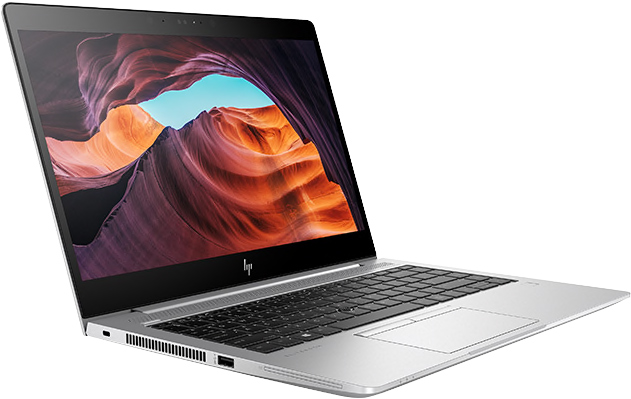

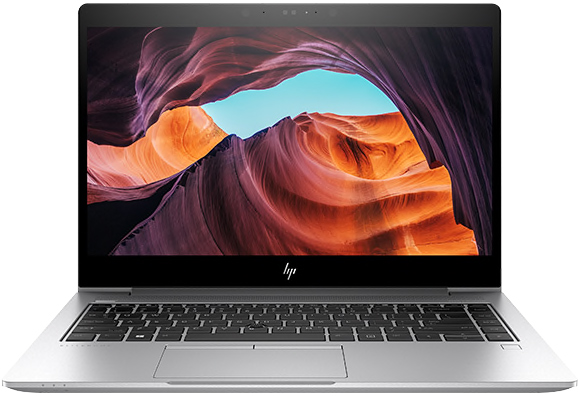
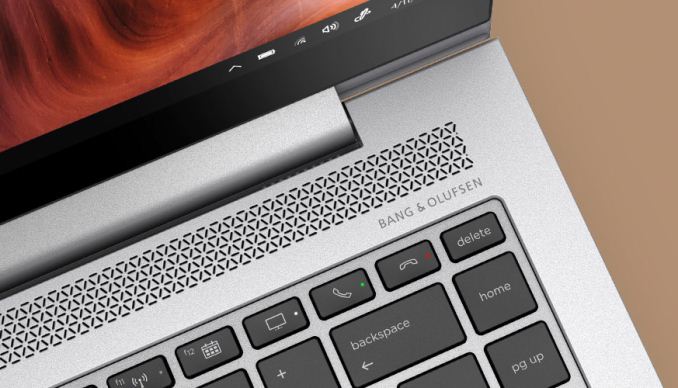
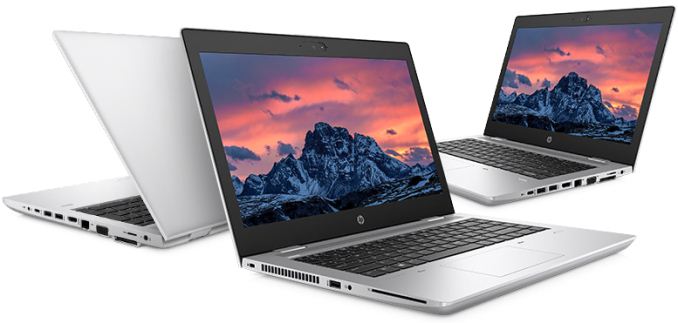
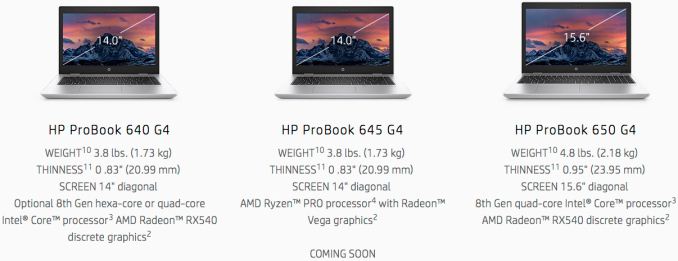
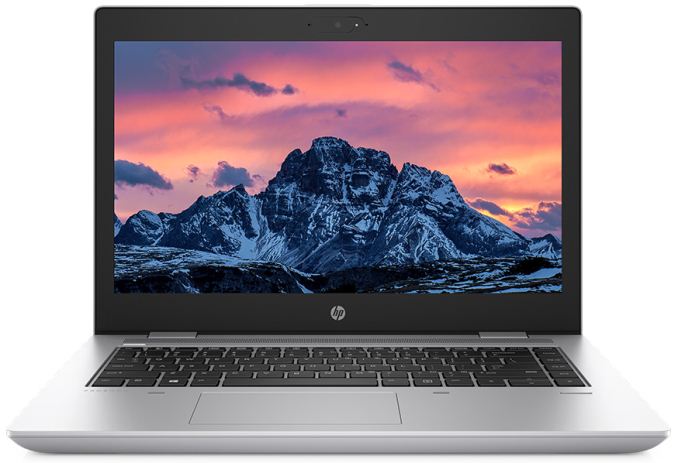
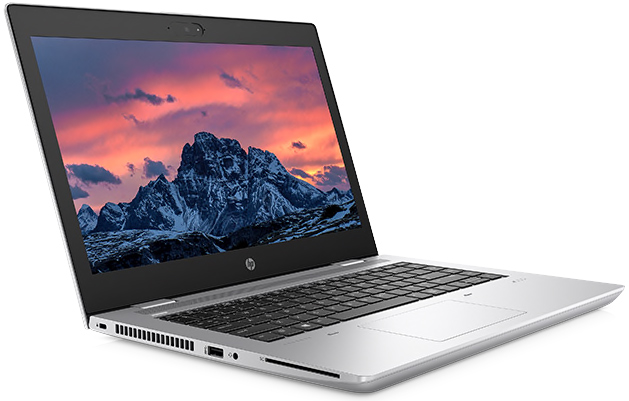

 Quote
Quote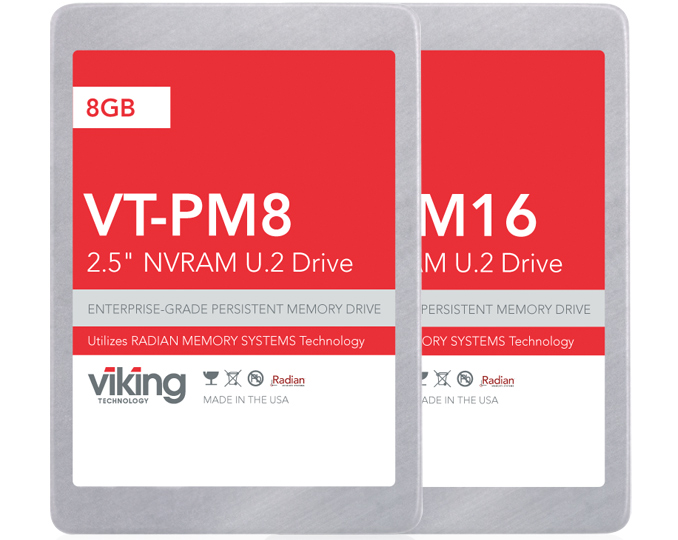
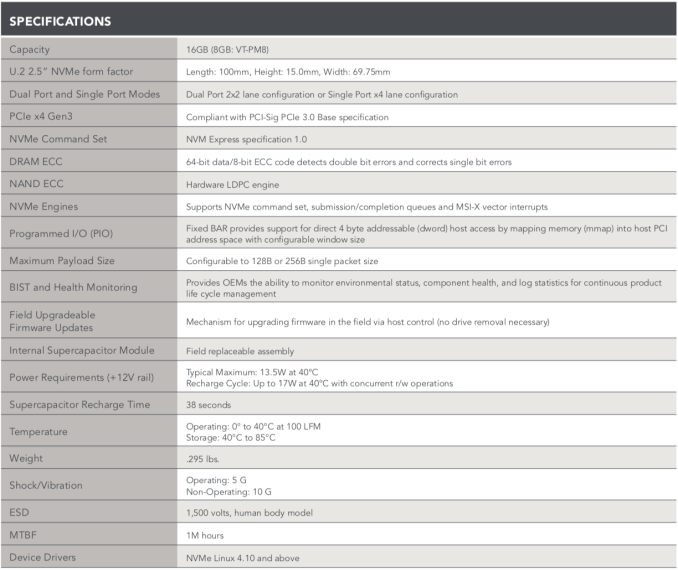
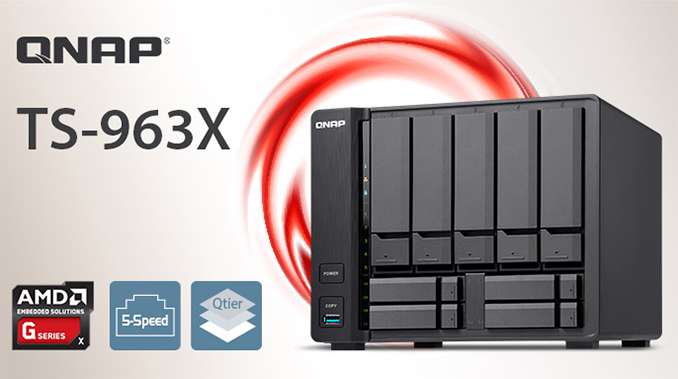
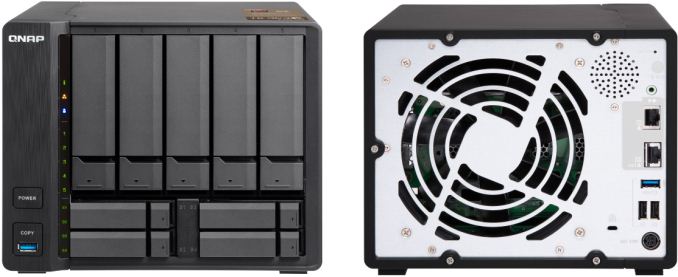
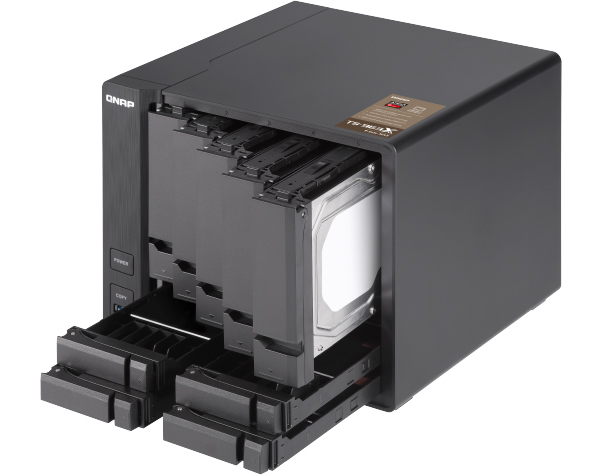
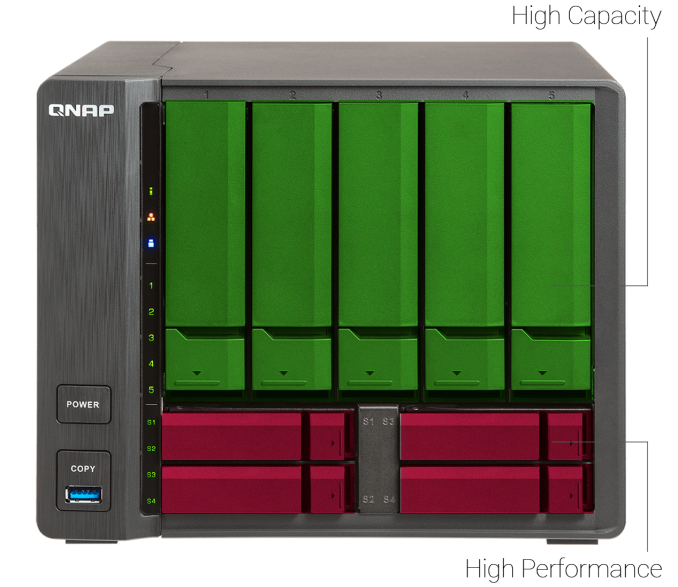


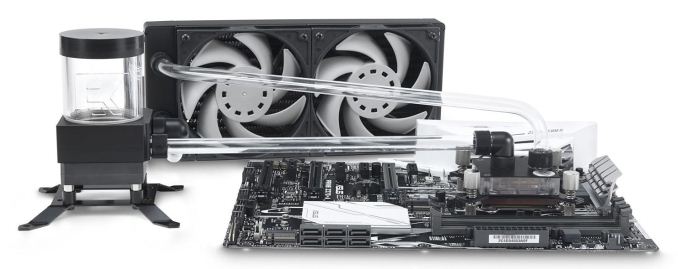
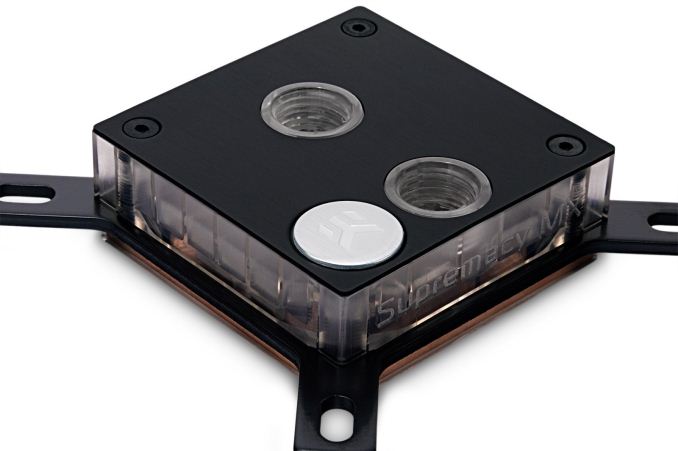

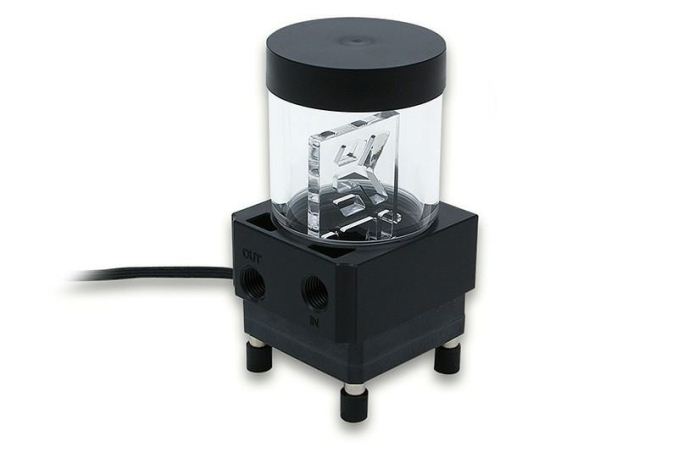
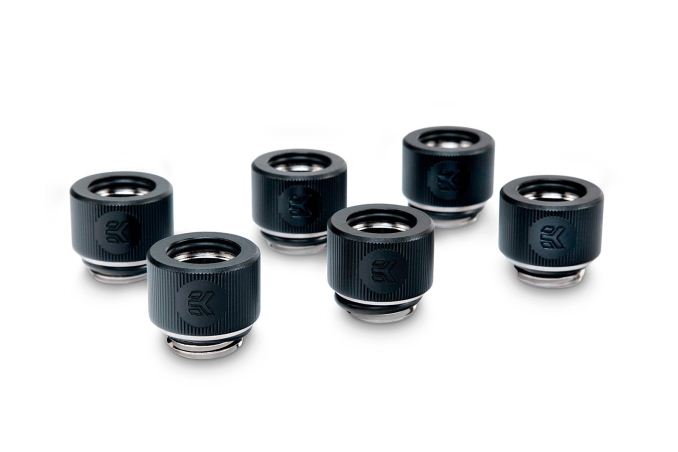

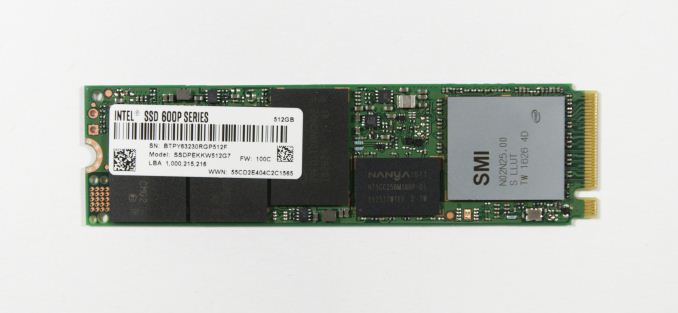

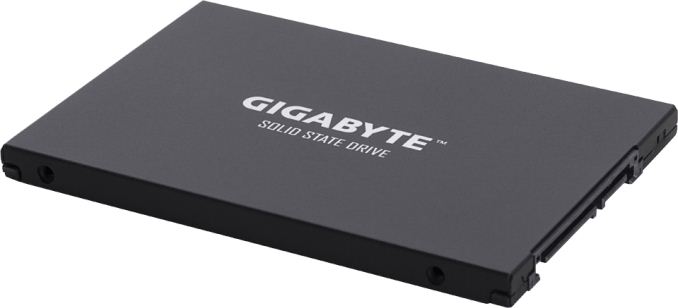
















Bookmarks